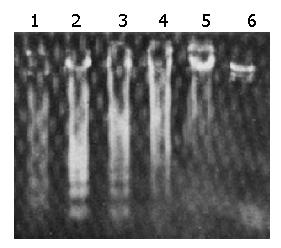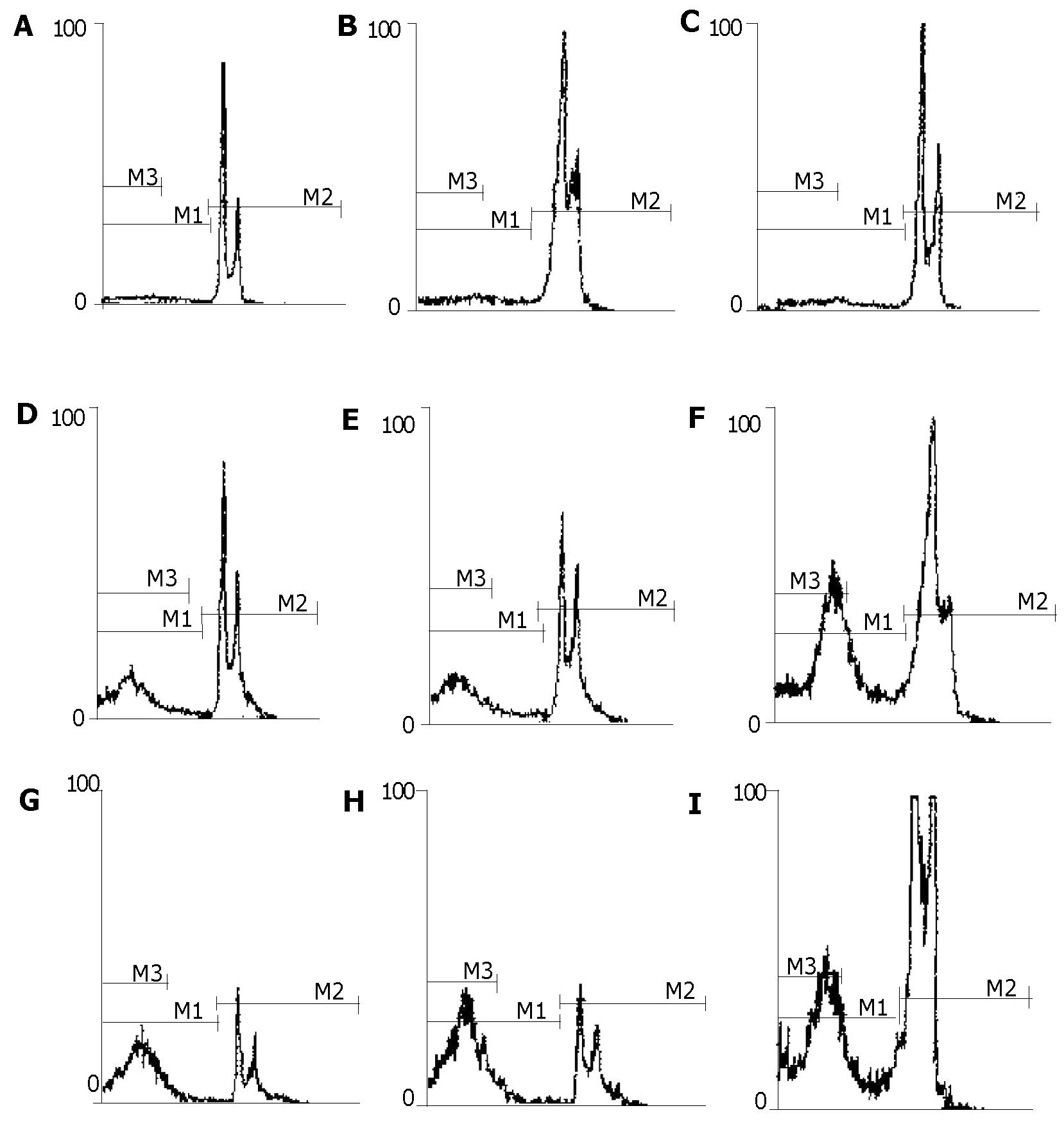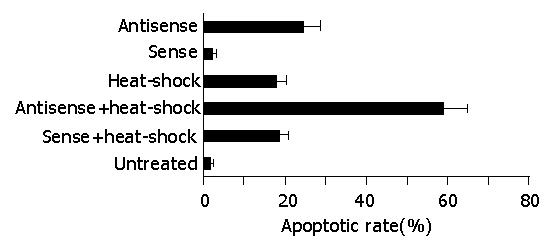Copyright
©2005 Baishideng Publishing Group Inc.
World J Gastroenterol. Jan 7, 2005; 11(1): 73-78
Published online Jan 7, 2005. doi: 10.3748/wjg.v11.i1.73
Published online Jan 7, 2005. doi: 10.3748/wjg.v11.i1.73
Figure 1 Dose- and time-dependent inhibition of proliferation by HSP70 antisense oligomer.
A: Inhibition of proliferation of SGC-7901 cells treated with various doses of HSP70 antisense or sense oligomers for 48 h; B: Inhibition of proliferation of SGC-7901 cells treated with 8 μmol/L HSP70 antisense or sense oligomers for various lengths of time.
Figure 2 Agarose gel DNA electrophoretic patterns.
Lane 1: 16 μmol/L antisense oligomer treatment for 48 h; lanes 2 and 3: 10 μmol/L antisense oligomer treatment for 48 h and 8 μmol/L for 72 h, respectively; lane 4: 8 μmol/L antisense oligomer treatment for over 100 h; lane 5: untreated; and lane 6: molecular marker.
Figure 3 Kinetics of apoptosis induced by HSP70 antisense oligomers in SGC-7901 cells.
A and B: dose- and time-dependent curves of antisense oligomers-induced apoptosis determined by flow cytometry, respectively.
Figure 4 Representative DNA fluorescence histograms of fluorescence 2-height (FL-2-H) showing cell cycle distribution and apoptosis percentage.
A: untreated with HSP70 oligomer; B and C: treated with 10 μmol/L sense HSP70 oligomer for 48 h and 8 μmol/L for 72 h, respectively; D-I: treated with 6, 10 and 14 μmol/L antisense HSP70 oligomers for 48 h and 8 μmol/L for 24, 72 and 96 h, respectively.
Figure 5 Effects of HSP70 antisense oligomer on apoptosis of SGC-7901 cells induced by heat-shock.
Figure 6 Western blotting analysis of HSP70 expression.
A: untreated SGC-7901 cells; B: treated with 10 μmol/L sense HSP70 oligomer for 48 h; C: treated with 8 μmol/L sense HSP70 oligomer for 72 h; D: treated with 8 μmol/L antisense HSP70 oligomer for 48 h; E: treated with 8 μmol/L antisense HSP70 oligomer for 72 h; and F: treated with 10 μmol/L antisense HSP70 oligomer for 48 h.
- Citation: Zhao ZG, Shen WL. Heat shock protein 70 antisense oligonucleotide inhibits cell growth and induces apoptosis in human gastric cancer cell line SGC-7901. World J Gastroenterol 2005; 11(1): 73-78
- URL: https://www.wjgnet.com/1007-9327/full/v11/i1/73.htm
- DOI: https://dx.doi.org/10.3748/wjg.v11.i1.73














